If you’re trying to brighten up that shady corner in your living room, low-light terrarium plants are your best friend.
In reality, many terrarium plants prefer indirect sunlight, but only a select few can handle the conditions at the lower end of light intensity.
Just remember, low light does not equal no light. You’ve got to give them something to work with.
Rather than producing an exhaustive list of terrarium plants that can just tolerate low light for short periods (that’s probably going to be mostly ferns), here’s a selection of terrarium plants that can really thrive in low light conditions.
Let’s take a look.
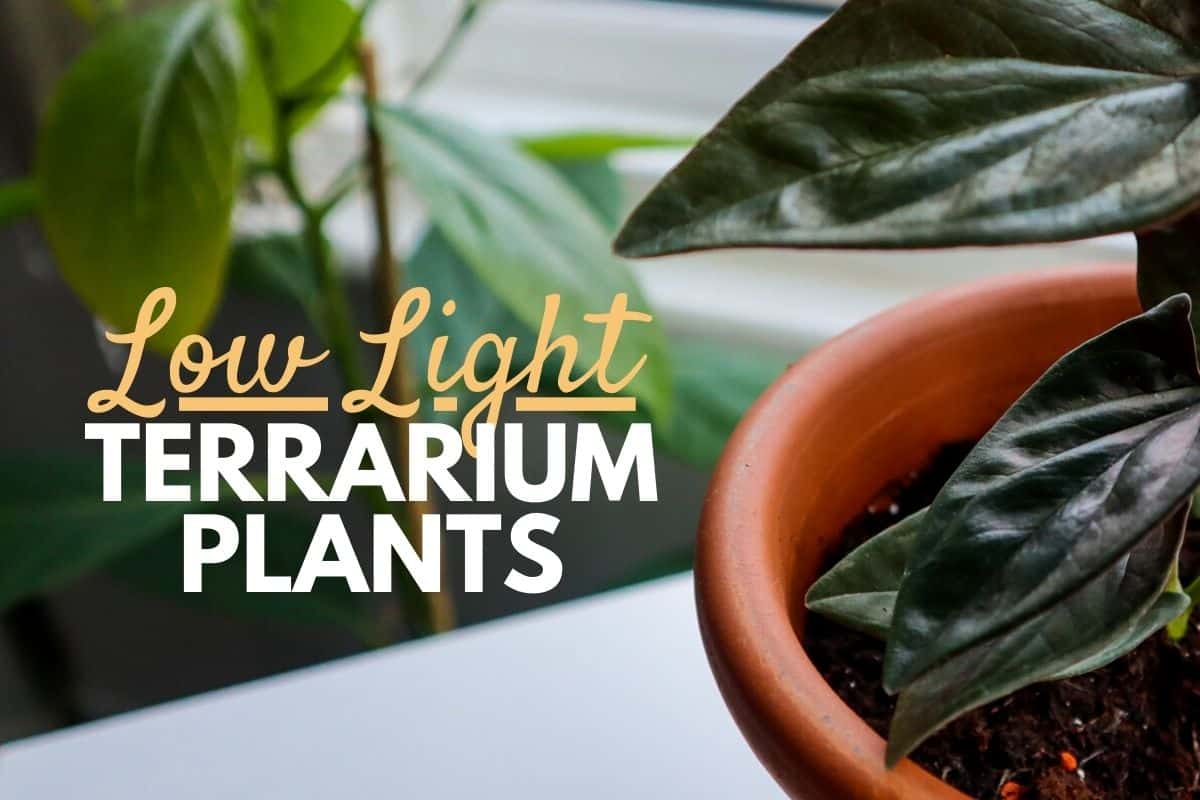
Terrarium Tribe is reader-supported. When you purchase through links on our site, we may earn an affiliate commission (at no further cost to you). 💜
True Low Light Terrarium Plants
1. Cryptanthus sp. (Earth Stars)
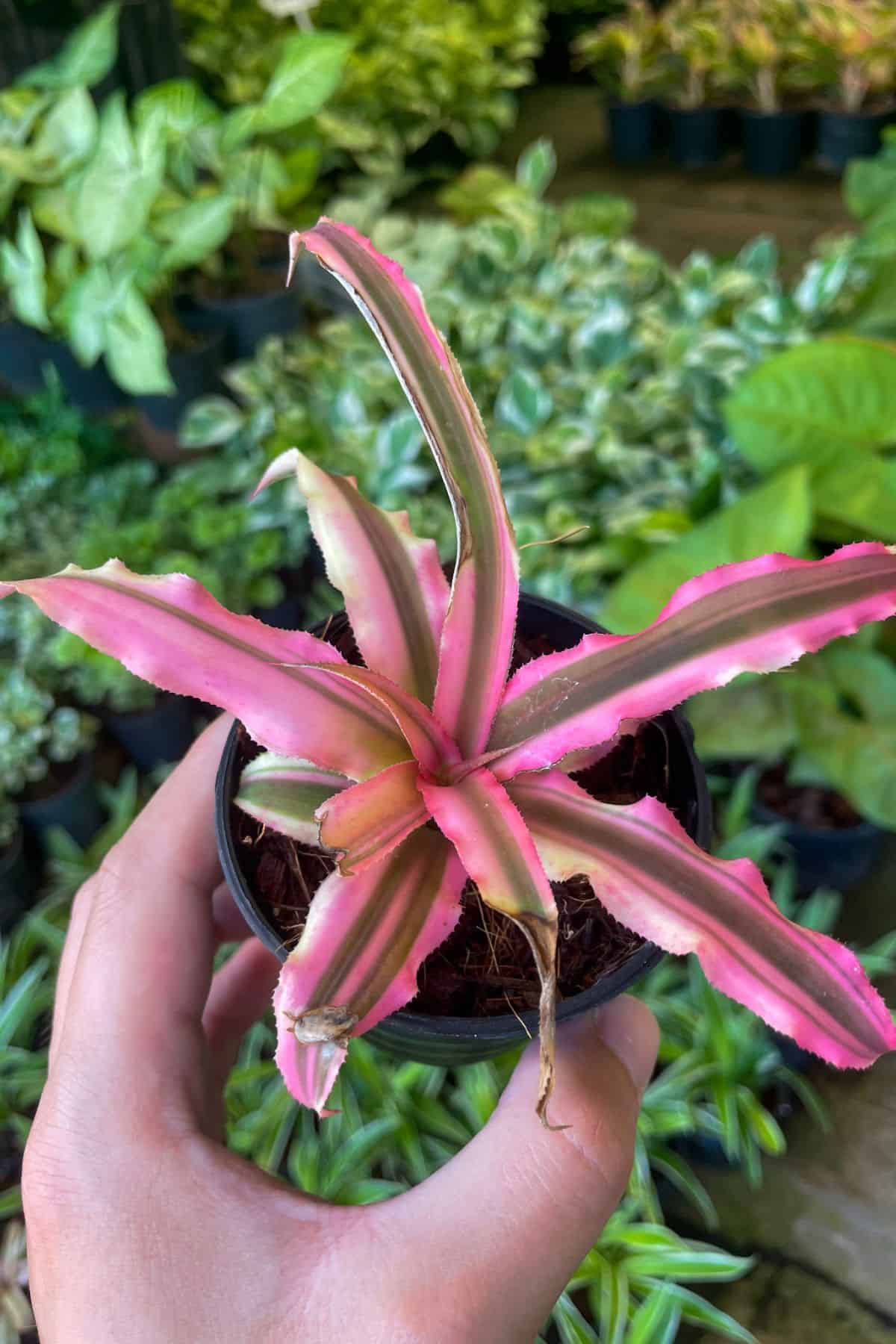
Earth stars are one of the few terrestrial Bromeliads (meaning they grow in the ground), so in the wild, they’re found far beneath the rainforest canopy.
Here, they typically receive only faint, dappled sunlight – making them great candidates for the low-light spaces in our homes.
Light requirements will vary depending on the variety of Cryptanthus, but according to the Cryptanthus Society, some like the Cryptanthus beuckeri are a true low-light contender.
We’ve used Cryptanthus bivittatus to great effect in our terrariums.
They come in a range of dazzling colors and make a great accent piece for any terrarium.
2. Syngonium (Arrowhead Plant)
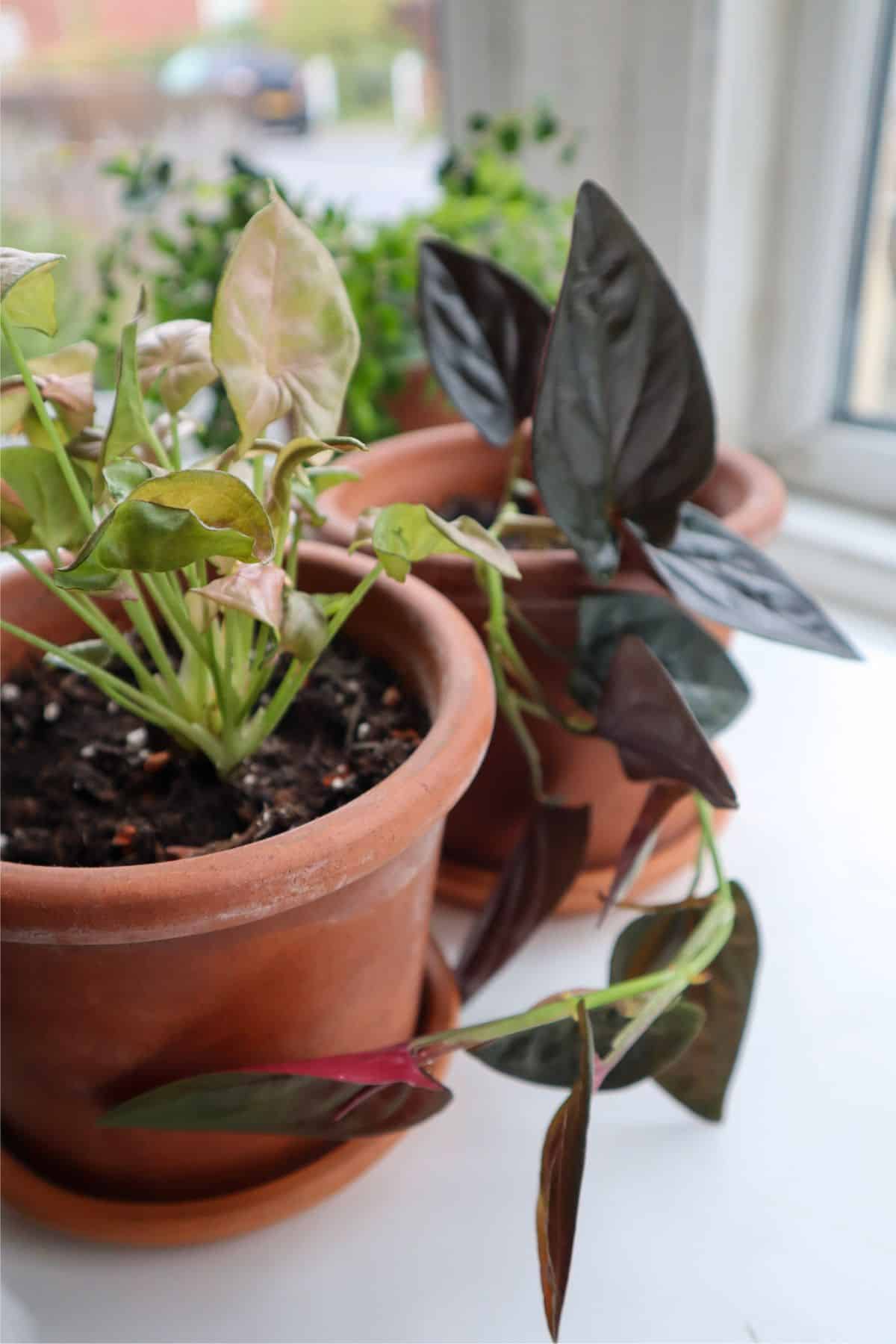
As you might expect from plants running along the rainforest floor or climbing trees, vines are another type of plant that typically grows well in low-light conditions.
The Arrowhead Vine is possibly one of the most prolific.
It’s a popular family of houseplants that comes in a striking array of greens, pinks, and reds, each with its characteristic arrow-shaped leaves.
As a family of tropical vines, the Syngonium genus has a variety of species that would thrive in a shaded closed terrarium with high moisture and humidity. That’s why they feature in our list of best beginner terrarium plants.
In fact, many can become rather large and can grow a bit too well in a smaller terrarium! Check out the dwarf ‘Pixie’ variety for a perfectly compact Syngonium.
3. Asplenium nidus (Bird’s Nest Fern)
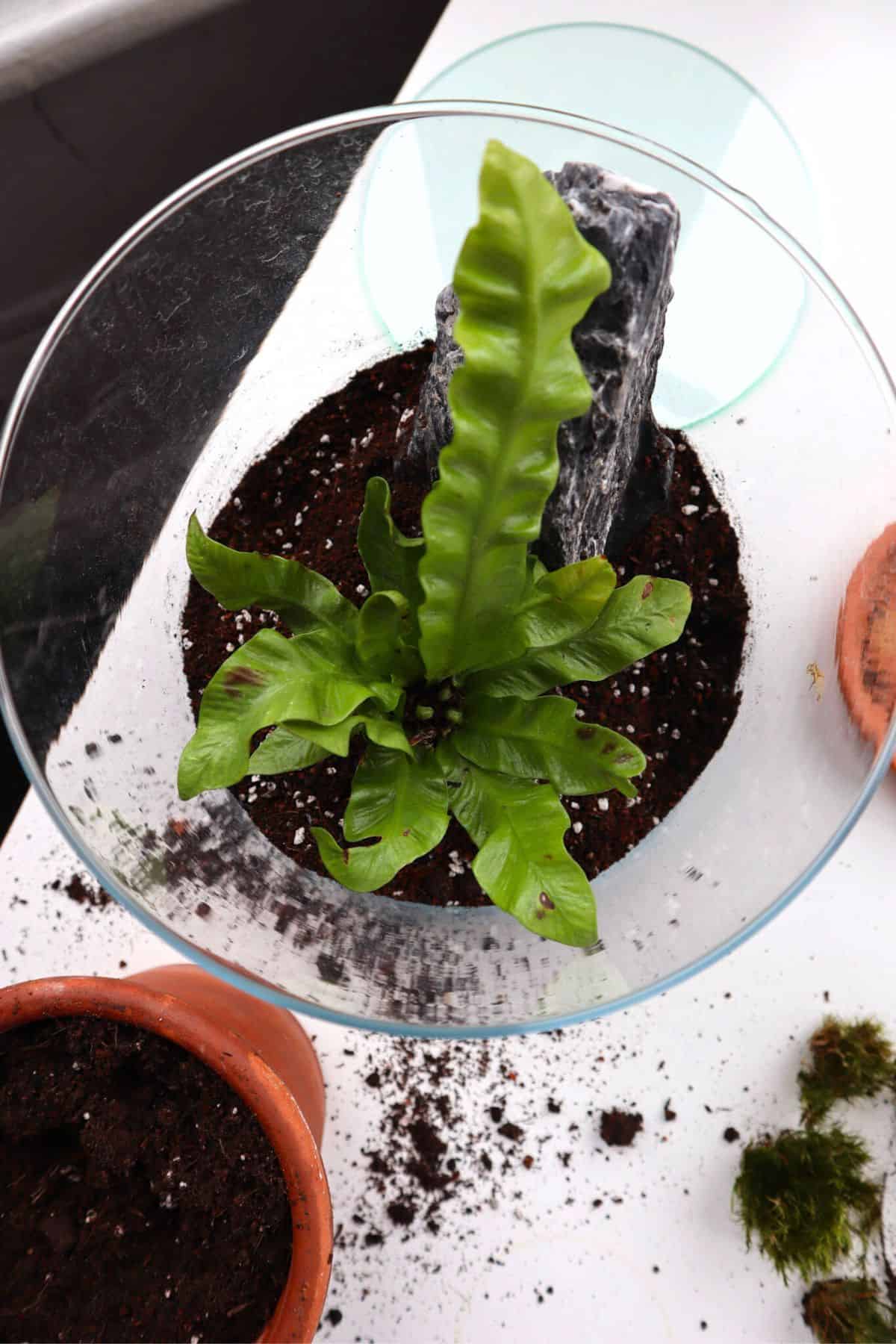
Okay, so I’ve included a fern, after all, but this one is particularly suited for life in the shade!
Where most ferns can tolerate some low light conditions, on the whole, they start to suffer after a prolonged period in darkness. You’ll see this with pale, withering fronds and shedding.
For the Bird’s Nest Fern, the crinkled texture of the leaves gives it an adaptive advantage in that it can increase or decrease its crinklyness (is that a word?) in order to provide the right amount of surface area on the leaves.
So, in a low-light environment, you can expect an Asplenium nidus to look much flatter.
Giving them some indirect sunlight through the day is best, but Asplenium nidus is probably one of the most forgiving ferns when it comes to lighting.
👉 See Asplenium nidus on Etsy.
4. Philodendron
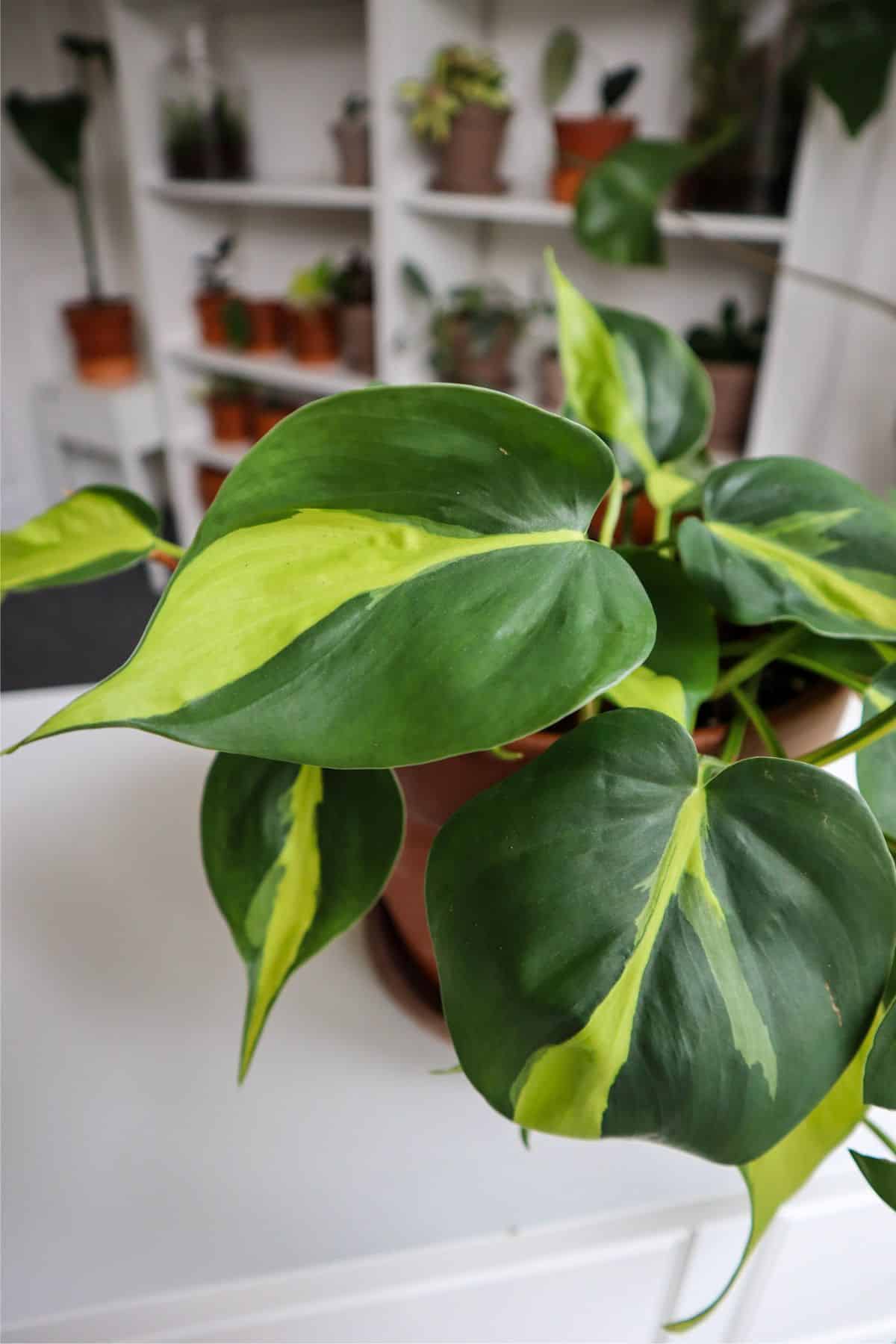
If you’re a plant person, you’ve probably come across a Philodendron before.
Their stunning green foliage, low light adaptability, and generally bulletproof nature make them an easy choice for the home.
Though these fast growers often need regular trimming in terrariums, smaller cultivars are appearing by the day.
As a general rule for green plants, the darker the leaves, the less light they require, So bear that in mind whilst you’re picking out low-light varieties and you should be fine.
👉 See Philodendron Birkin on Etsy.
5. Macodes petola (Lightning Jewel Orchid)
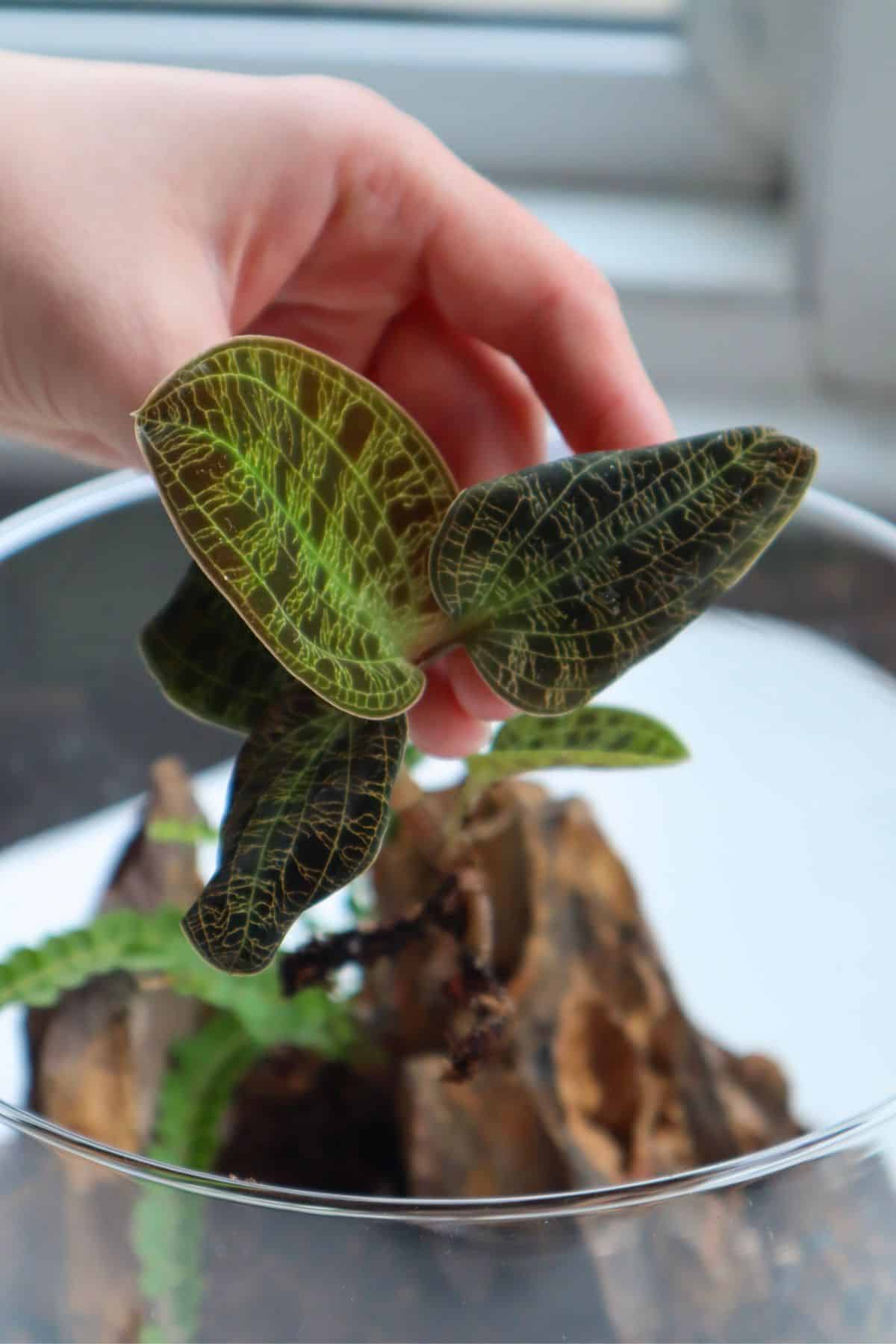
Perhaps the most dazzling of all the jewel orchids, Macodes petola gets its common name from its “striking” lightning-like leaf venation.
It’s a favorite of mine, and it happens to be one of the smallest of its kind, so it’ll fit in almost any terrarium setup.
Where most orchids are prized for their flowers, Macodes petola is one of the few that really stands out for its beautiful foliage.
As terrestrial orchids, they grow in the ground (whereas many others are epiphytic and attach themselves to branches and trees), but they have more unique substrate requirements than other plants – lots of aeration and drainage.
They’ve been grown in terrariums for years, but some people have found they do better with a little airflow.
Or, check out my Jewel Orchid Guide for more on these beautiful plants.
6. Selaginella martensii ‘Frosty’
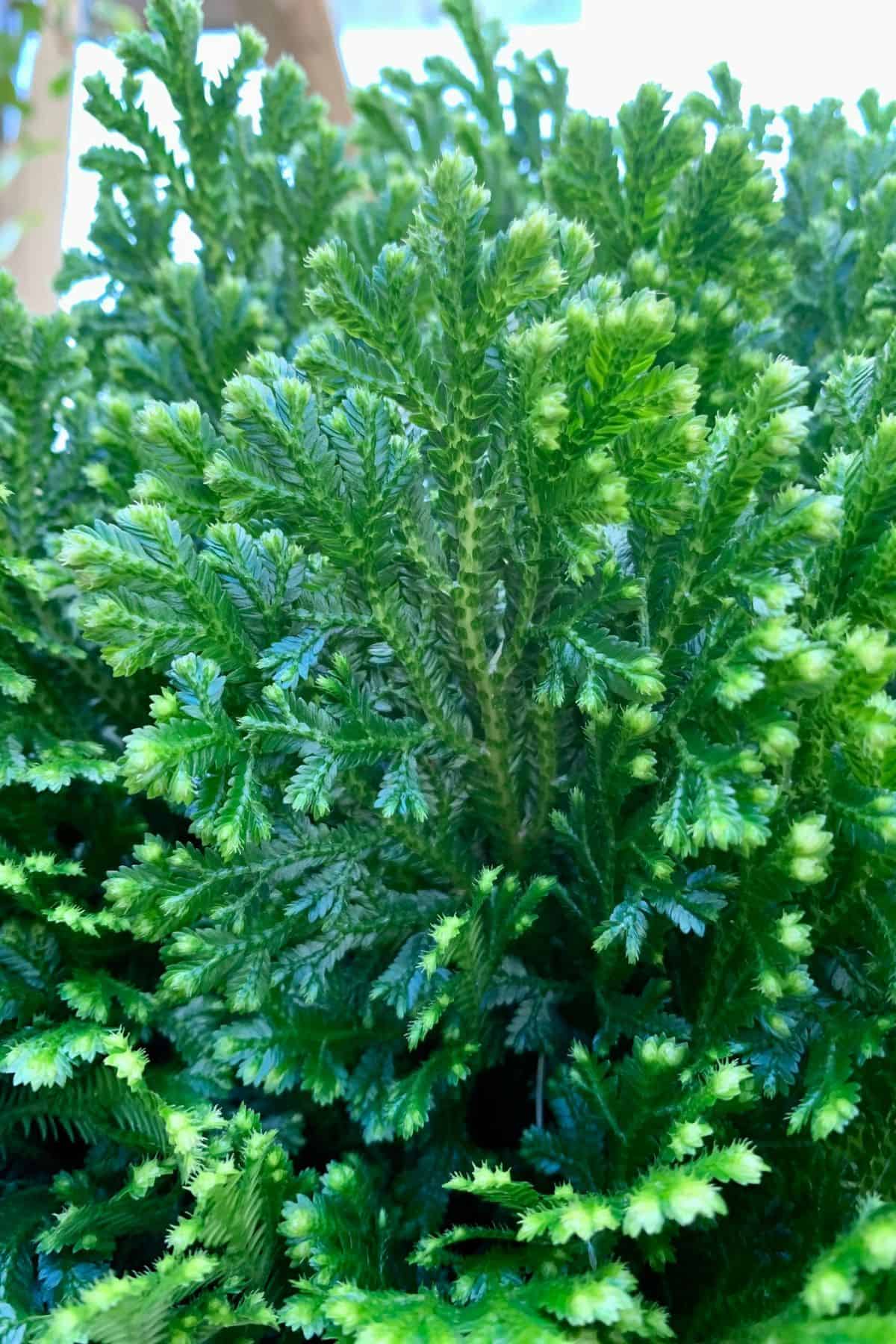
Selaginella are a hardy type of terrarium plant. Landing somewhere between a moss and a fern, many varieties of Selaginella can tolerate low light conditions, but the martensii variety appears to be the most forgiving1.
Known as the “Frosty” Selaginella for its light variegation (and somewhat fractal shape, I think), it’s a great way to add texture to a shady terrarium environment.
With overlapping, frost-tipped leaves, ‘Frosty’ looks like quite the festive plant, but it’ll really thrive in hot and humid conditions. It will easily form a dense mat, and will only grow up to a few inches tall.
👉 See Selaginella martensii ‘Frosty’ on Etsy.
7. Pilea depressa (Baby Tears)
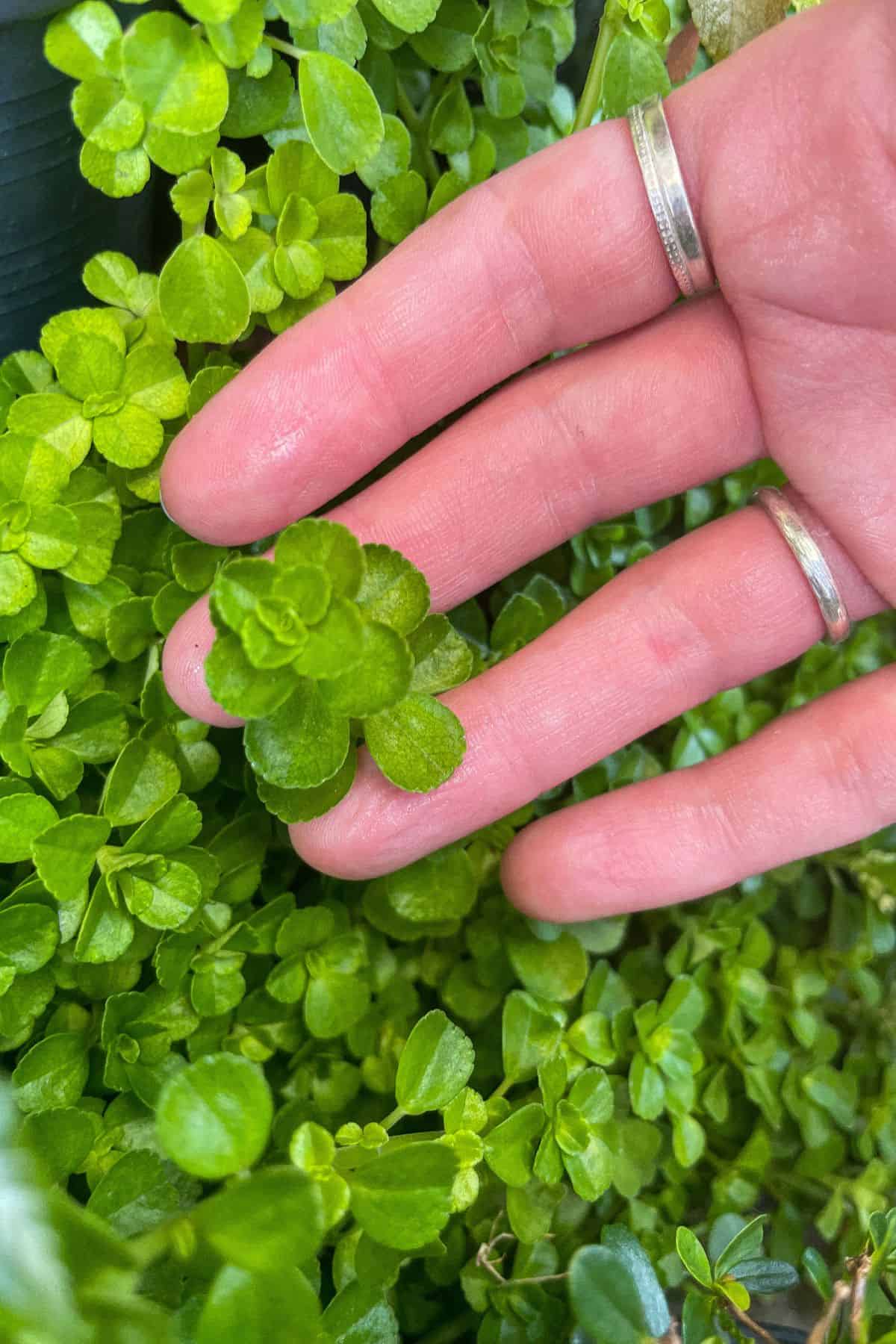
With lots of tiny, round leaves along a creeping vine, it’s a gorgeous little plant with lots of character. Its need for consistent moisture and warmth makes it an ideal fit for terrariums, but it’s a surprisingly resilient plant.
Unlike its popular cousin, P. peperomioides (the Chinese money plant), Pilea depressa has very low light requirements and should do just fine as long as it gets some indirect sunlight throughout the day.
8. Peperomia caperata
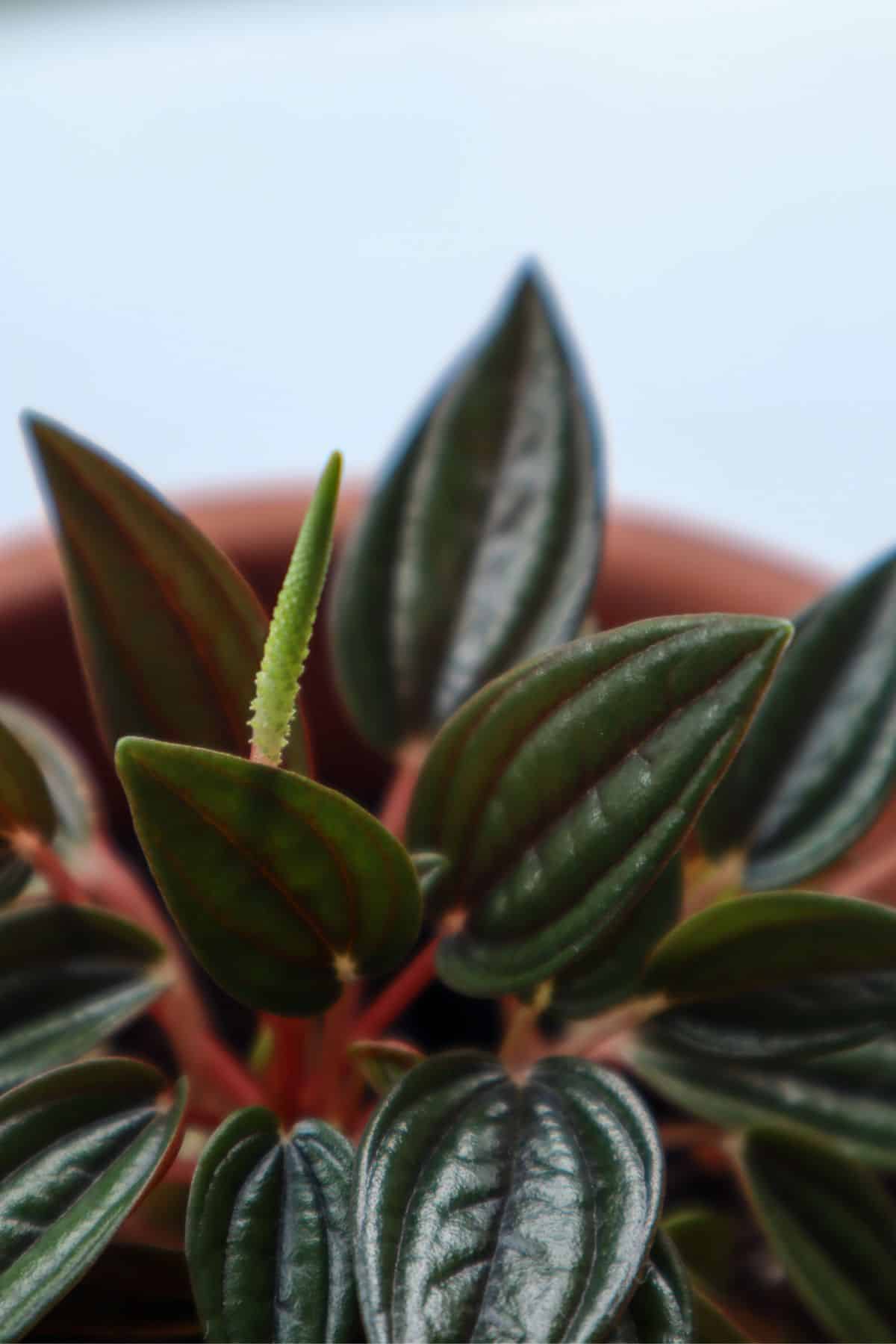
Peperomia is another genus of small tropical plants that you’ll find naturally on the shaded rainforest floor.
With over 1000 species of Peperomia recorded – and a wide diverse range of colors and shapes – you’re bound to find one that’s perfect for you.
Though different Peperomias are going to have different light tolerances (and the variegated species can sometimes lose their variegation in low light) Peperomia caperata is a great choice, with lovely dark, ridged leaves.
👉 See Peperomia caperata on Etsy.
9. Ficus pumila (Creeping Fig)
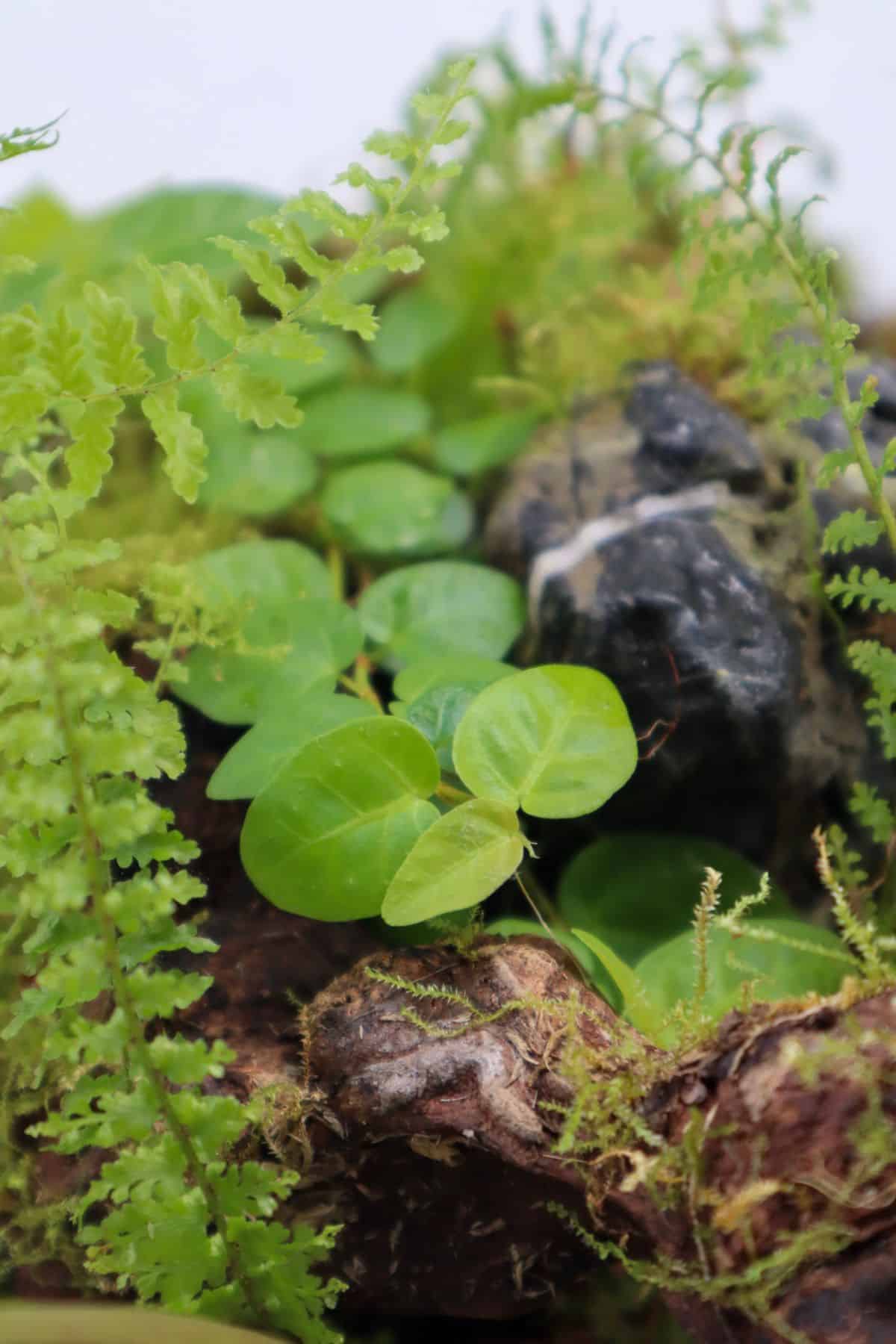
It’s native to East Asia, but these days, you’ll often find it in gardens around the world, crawling through the undergrowth or up the sides of buildings. In fact, it’s considered an invasive species in some areas, but we’ll use that resilience to our advantage!
Ficus pumila is ideal for smaller terrariums where it’ll readily weave its way across the foundation and up the sides. Generally, it prefers bright, indirect light but it’ll still grow well in a shaded environment.
10. Fittonia albivenis (Nerve Plant)
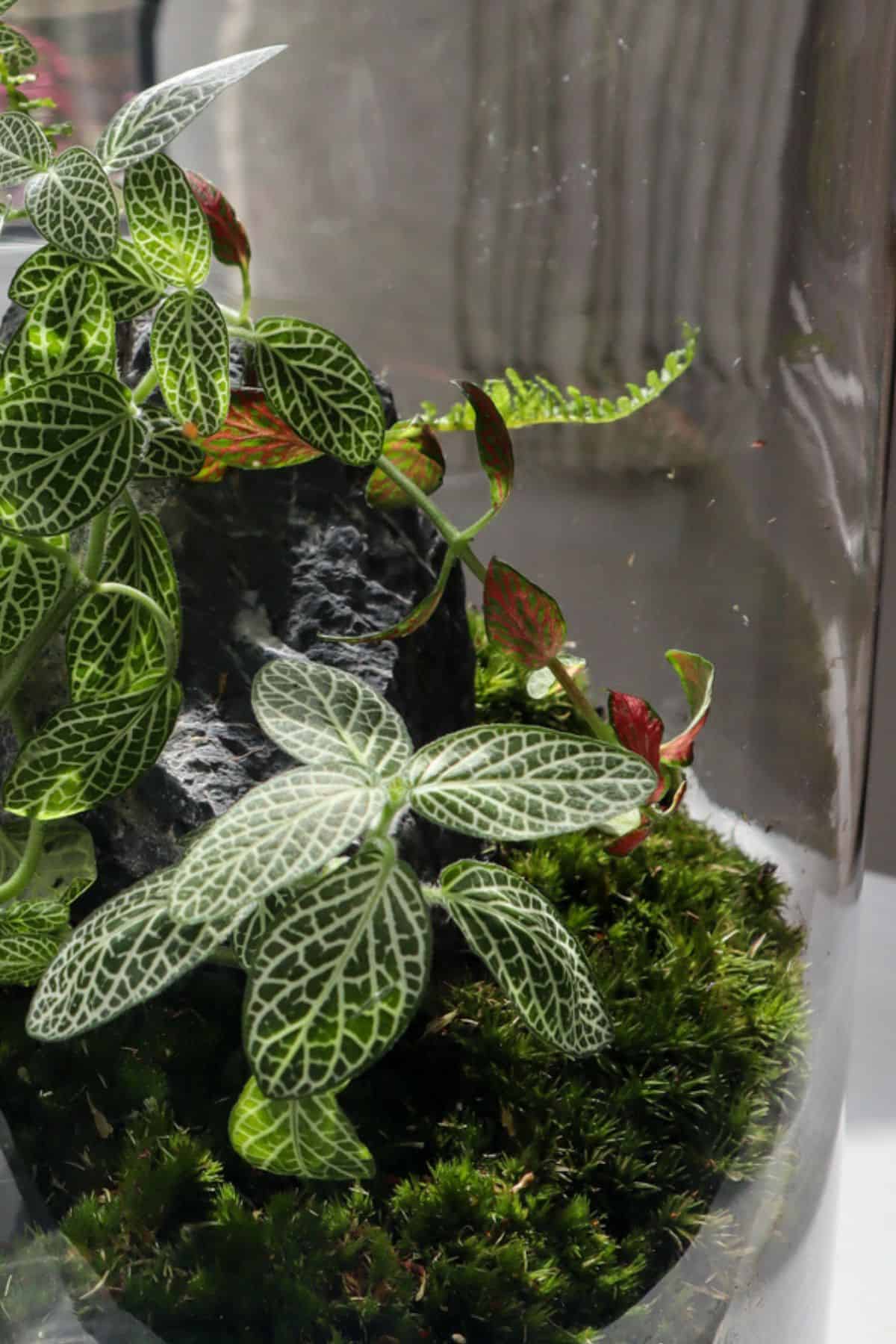
Last but not least is the classic terrarium plant Fittonia albivenis.
When they’re not found in terrariums, they’re likely to be found in dark bathrooms around the world. As long as they’ve got plenty of moisture and humidity, I find they’re very forgiving when it comes to lighting.
As with many other plants on this list, Fittonia are a rainforest floor dwelling plant (Peruvian in this case) so the closer you can replicate that environment the better.
👉 See Fittonia albivenis on Etsy.
A Final Note on Low Light Terrariums (and Tolerance)
As you may have discovered in the blog posts on bright, indirect sunlight or lighting for terrariums – identifying and selecting an area of your home with the ‘ideal’ lighting for your terrarium is an ongoing challenge.
This is still true of areas of low lighting, perhaps even more so.
Typically when we talk about low light, we mean something towards the bottom of the indirect light scale. Maybe a shady spot that’s a couple of meters away from a window, or an open corridor attached to some bright rooms.
If you can comfortably read a book in the ambient light, so-called low light plants should manage just fine.
In the end, “low light” is still a range, as is the low light tolerance of your plants.
As always with terrariums, there’s a degree of trial and error. Hopefully, you can find the ideal spot the first time, but don’t be surprised if you have to find a slightly different spot. Our eyes aren’t designed to perceive brightness very well, so don’t worry if you mess up.
If you need more advice on individual terrarium plants, be sure to check out our guide to closed terrarium plants.
Good luck!
Over to You
Have I missed any great low-light terrarium plants off this list?
I’d love to hear if you have any experience with these (particularly with Begonias, which I considered but ultimately chopped from the list).
Or, if you’re planning a new low-light terrarium project and already have your plants picked, check out our online terrarium store!
References
- https://laidbackgardener.blog/2016/12/14/frosted-fern-a-christmas-mystery-plant/ ↩︎

Thank you for sharing this list of low-light terrarium plants.
Thanks for the info and great pictures!
Nice photography 👍